I. Introduction: Press Freedom Under Fire
The theme for World Press Freedom Day 2025 is “Reporting in the Brave New World – The Impact of Artificial Intelligence on Press Freedom and the Media”. While this theme invites reflection on how AI technologies are reshaping global journalism, in Somalia, the core battle remains one of physical survival, censorship, and systemic repression. AI may offer tools for faster fact-checking or new storytelling platforms, but Somali journalists still grapple with a state where offline dangers—from police brutality to other armed militant threats—overshadow digital opportunities. The juxtaposition of global innovation and local suppression underscores the urgent need to ensure that technological advancement does not bypass the foundational right to press freedom.
Somalia’s press corps has long operated under dangerous and volatile conditions, but the first quarter of 2025 saw an alarming escalation in both offline and online attacks against journalists. From January through April, over 30 journalists were arrested or detained, and over 20 media professionals had their equipment confiscated—a sharp increase from prior years. Mainly these violations, carried out by state security agencies, represent a systematic attempt to suppress independent journalism.
This report documents reality on the ground through verified figures and firsthand testimony from journalists—male and female—who experienced state violence, censorship, and criminalisation for reporting critical issues. Under dangerous and volatile conditions, the first quarter of 2025 saw an alarming escalation in both offline and online attacks against journalists.
II. A Dangerous Environment for Journalism
The environment in Mogadishu, Somalia’s capital, has become particularly repressive. Al-Shabaab remains a lethal threat, but journalists now face equally grave dangers from the state itself. The National Intelligence and Security Agency (NISA) and other security organs, including the police, have been responsible for the majority of arbitrary detentions and intimidation tactics.
On March 18, a bombing targeted Hassan Sheikh Mohamud’s presidential convoy, resulting in the tragic death of journalist Mohamed Abukar Dabaashe. His death near the presidential palace—one of the most secure zones in the country—underscored the complete breakdown of journalist protection mechanisms.
III. The Ramadan Crackdown: Journalism is Criminalised
During the holy month of Ramadan, an unprecedented wave of arrests targeted journalists covering a car bomb explosion. The repression began after several outlets published footage of a damaged presidential convoy. Media centres were attacked, and journalists on the scene were rounded up, detained, and, in some cases, offered freedom in exchange for deleting footage.
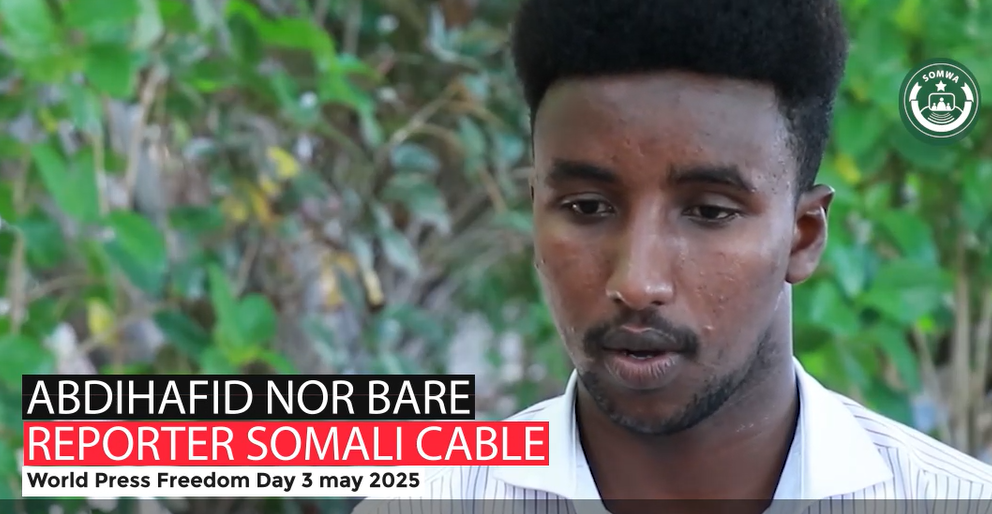
“They offered us a choice: delete the footage or face arrest. They informed us that our reporting was subversive. – Abdihafid Nor Barre, detained journalist.
“Police stormed our media centre, arrested all of us—TV crew, radio staff, and producers. They provided no explanation. – Hamda Hassan Ahmed, detained female journalist These coordinated arrests violated basic rights to freedom of expression and due process.
Journalists were transported in police vans without explanation and detained in inhumane conditions near the site of the explosion—polluted and filled with wounded civilians and blood everywhere.
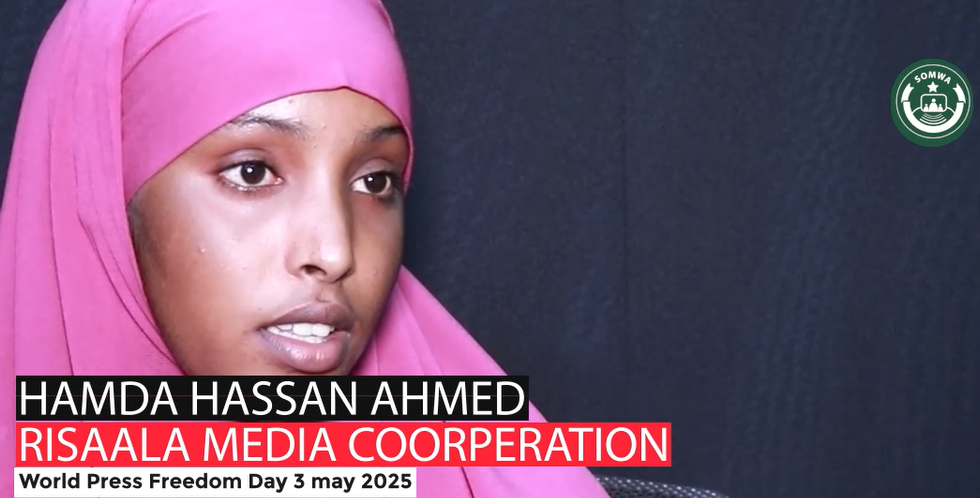 “We were made to walk through the blast site while injured people lay on the ground. It was a form of inhumane humiliation and intimidation.” – Hamda
“We were made to walk through the blast site while injured people lay on the ground. It was a form of inhumane humiliation and intimidation.” – Hamda
IV. The Gendered Burden: Female Journalists in Crisis
Women journalists are facing unique and compounding threats. Alongside physical raids and arrests, they endure sexual harassment, online abuse, and institutional exclusion.
“There are no media outlets owned or led by women in Somalia. We have to deal with harassment from our male peers, sources, and society.” – Leyla Osman, Somali Women Journalists Organisation (SWJO).
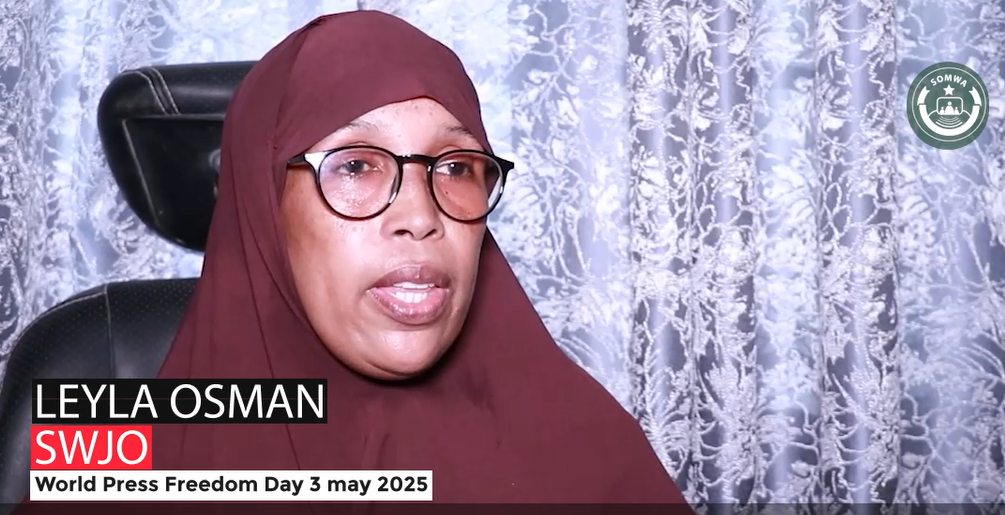 Many women have been forced to leave the profession entirely, citing emotional trauma, lack of support, and career stagnation due to discrimination.
Many women have been forced to leave the profession entirely, citing emotional trauma, lack of support, and career stagnation due to discrimination.
“Female journalists are treated like intruders in their profession. People question them based on their gender before showing them respect for their role as reporters. – Leyla Osman.
Despite these challenges, women journalists continue to lead advocacy efforts for safer working conditions and gender equality in media spaces.
V. Digital Censorship: The Facebook Factor
As access to traditional platforms shrinks, Somali journalists are increasingly using Facebook to publish their work and reach the diaspora. However, Meta’s automated moderation system and community reporting tools have been weaponised to silence critical voices. At least eight journalists and media outlets reported having their Facebook pages or posts taken down—many of which had covered critical reports.
“It is unacceptable that Meta is becoming a new tool of repression. Journalists lack an appeals process, leaving them without a voice. We have recorded journalists whose posts were wrongly taken, profiles and accounts were suspended, and did not have them reinstated for a couple of months. – Maryan Seylac, executive director of the Somali Media Women Association (SOMWA).
VI. The Government’s Mixed Messages
While government officials, such as Minister of Information, Culture and Tourism Daud Aweys, publicly commend journalists and advocate for dialogue, the reality on the ground suggests a double standard.
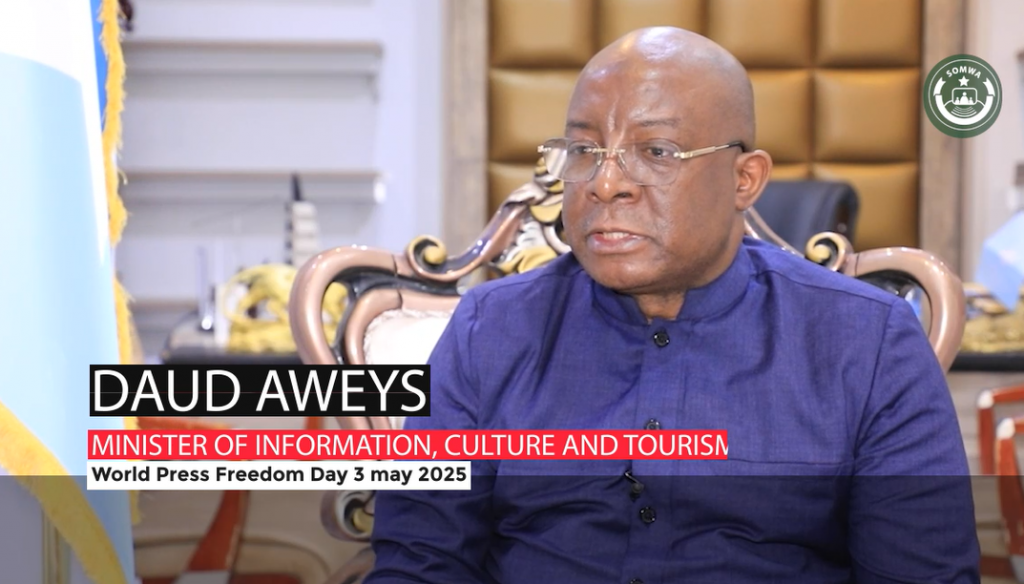 “We support press freedom, but we must also guard against misinformation and incitement.” – Minister Daud Aweys.
“We support press freedom, but we must also guard against misinformation and incitement.” – Minister Daud Aweys.
This language has often been used to justify censorship, particularly around coverage of Al-Shabaab, military operations, and government mismanagement. Furthermore, the national media council, mandated by law to regulate journalism independently, has not been properly constituted, with critical independent media excluded.
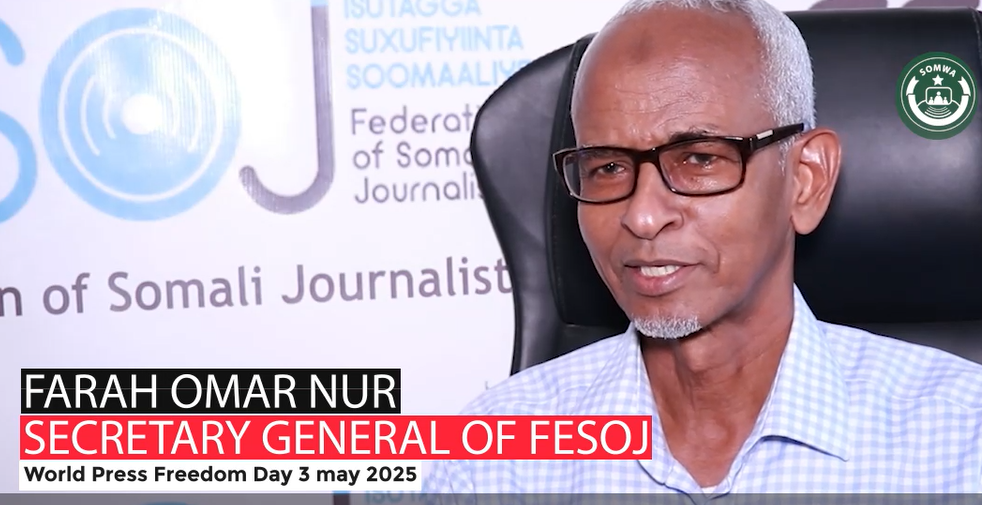 “The national media council must be fully established. We want the government to join us in supporting the journalists in court.” – Farah Nur.
“The national media council must be fully established. We want the government to join us in supporting the journalists in court.” – Farah Nur.
VII. State Agencies as Instruments of Fear: Police and NISA
Both the Somali Police Force and National Intelligence and Security Agency (NISA) have emerged as the central instruments of fear and suppression.
During the Ramadan crackdown, Mahdi Omar Muumin (Moalin Mahdi), the Benadir regional commissioner, released the 19 journalists he had ordered to be arrested and later apologised for their arrest. Previously, he had publicly vowed to jail any journalist reporting on security issues.
Some hailed his gesture as a rare instance of transparency, but civil society groups emphasise that protection cannot depend on individual goodwill—it must be enshrined in law and practice. Mahdi’s actions, while commendable, serve as a reminder of what accountable leadership can look like within a system that often enables impunity.
Mahdi insists that if journalists have not committed wrongdoing, the police will protect them and that media and police have open communication lines – yet such claims ring hollow when arrests, raids, and threats continue unchallenged.
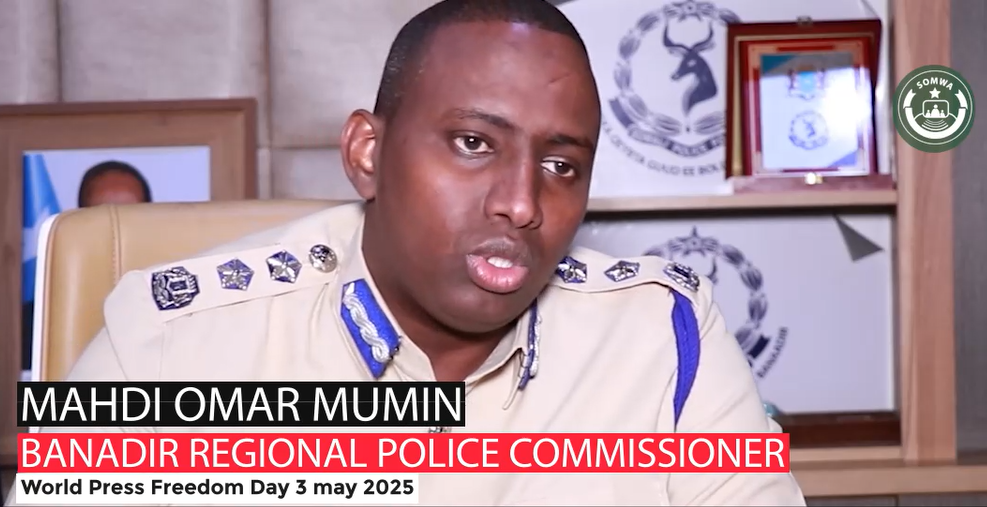 ‘If the journalist has not committed any wrongdoing, the police are ready to protect his/her rights and freedom of expression.’ Moalin Mahdi.
‘If the journalist has not committed any wrongdoing, the police are ready to protect his/her rights and freedom of expression.’ Moalin Mahdi.
NISA agents have also played a key role in these abuses. In a disturbing incident, NISA targeted Bahjo Abdullahi Salad, a journalist, for reporting on waste dumping near a government event. NISA raided her home, arrested her without a warrant, and interrogated her for four hours. Only public pressure from fellow journalists secured her release.
Such actions demonstrate the systematic misuse of security forces to silence legitimate reporting. Instead of investigating misconduct or promoting accountability, agencies such as NISA and the police are punishing transparency and fostering a culture of fear.
“Even discussing environmental issues now poses a threat to national security. – Somali journalist, anonymous for safety.
VIII. Impunity and Injustice: No Redress, No Reform
Impunity remains the greatest threat to press freedom in Somalia. Arrests are rarely followed by investigations or court proceedings. Journalists are often released quietly after being interrogated, threatened, or tortured.
“Most of the violations never even go to trial. Journalists are beaten, released, and then warned to remain silent.” – Farah Nur.
Mahdi, on the other hand, agrees that journalists encounter obstacles and are turned back at checkpoints or refused permission to record, but only, as he says, when security agencies, primarily the police, have not completed their duties. In some cases where journalists are violated, they hold accountable those who committed the act.
”We will hold the officers who committed the abuse strictly accountable if they are subjected to acts that are beyond the law, as journalists are public servants who chose to serve the public.” Moalin Mahdi
IX. Path Forward: A National and International Responsibility
The Somali Media Women Association (SOMWA) calls for:
• Full implementation of Somalia’s media law.
• An end to arbitrary arrests and digital censorship.
• Protection protocols for journalists in conflict zones.
• Gender-sensitive safety measures and anti-harassment policies.
• Accountability for perpetrators of violence against media workers.
X. Conclusion: Voices of Courage
Despite constant threats, Somali journalists continue to report, to investigate, and to amplify the voices of their communities. Their courage is a form of resistance, and their work is essential to Somalia’s democratic progress.
“You are the watchdogs of power, the keepers of truth. Stay strong. Stay safe. Somalia needs you.” – Minister Daud Aweys.
“Somali journalists play a major role in every aspect of society, such as education, security, development and the economy; they are the backbone of society. Therefore, I congratulate you.” Moalin Mahdi.
Please click here to watch the full documentary.


